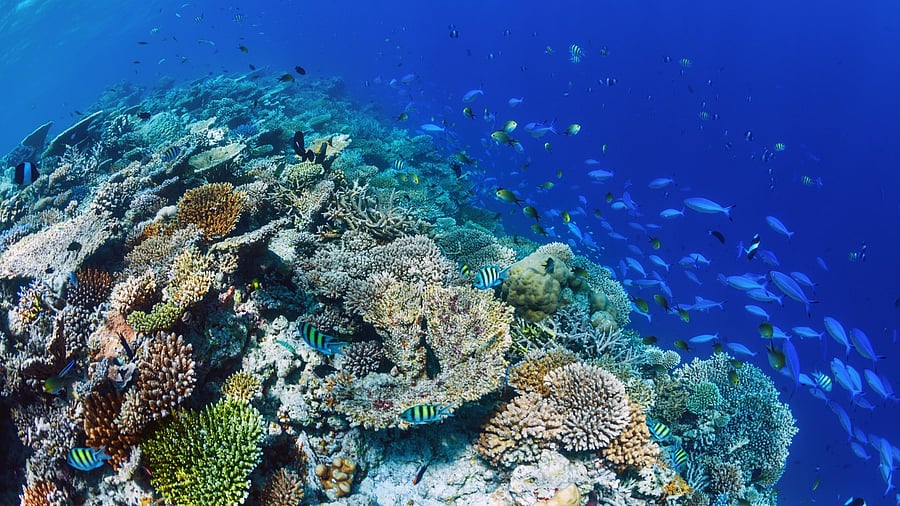
Coral Reef. Representative image.
Credit: iStock Photo
Heat stress has impacted 84 per cent of the world’s coral reefs as surging ocean temperatures continue to fuel the most severe global bleaching event on record.
The current bleaching event which began in early 2023 has affected 82 countries and territories, damaging marine ecosystems and delivering economic losses, the International Coral Reef Initiative said in a report published on Wednesday. Coral reefs underpin an estimated $2.7 trillion a year of goods and services.
“If temperatures don’t reduce soon then we will lose coral reefs as we know them,” said Jen Matthews, a research fellow at the University of Technology Sydney, and an expert in coral nutrition. “There may still be corals but their diversity and the global reach won’t be the same.”
Credit: Bloomberg
Reefs are home to about a quarter of all marine life and rely on algae for food and color, but when water temperatures exceed the corals’ heat tolerance, the symbiotic algae turn toxic and are expelled.
The current bleaching event is the fourth on record, and the second in a decade, according to the ICRI, founded in 1994 by eight countries including the US to advocate for coral preservation and which counts nations, nonprofits and companies like Mars Inc. among about 100 members.
Recent impacts have been so severe that scientists in late 2023 expanded a warning system to include three additional alert levels to account for higher levels of coral mortality.
Deprived of nutrition, corals can turn white and die unless waters cool. Coral provide food, livelihoods and coastal protection for an estimated one billion people.
They also support economic activity worth trillions a year, including $36 billion in tourism, according to a 2020 study by the Global Coral Reef Monitoring Network, an alliance of scientists established by the ICRI.
Last year, scientists warned that Australia’s iconic Great Barrier Reef faces the risk of near-annual coral bleaching with temperatures in surrounding waters found to have reached the highest in at least 400 years.